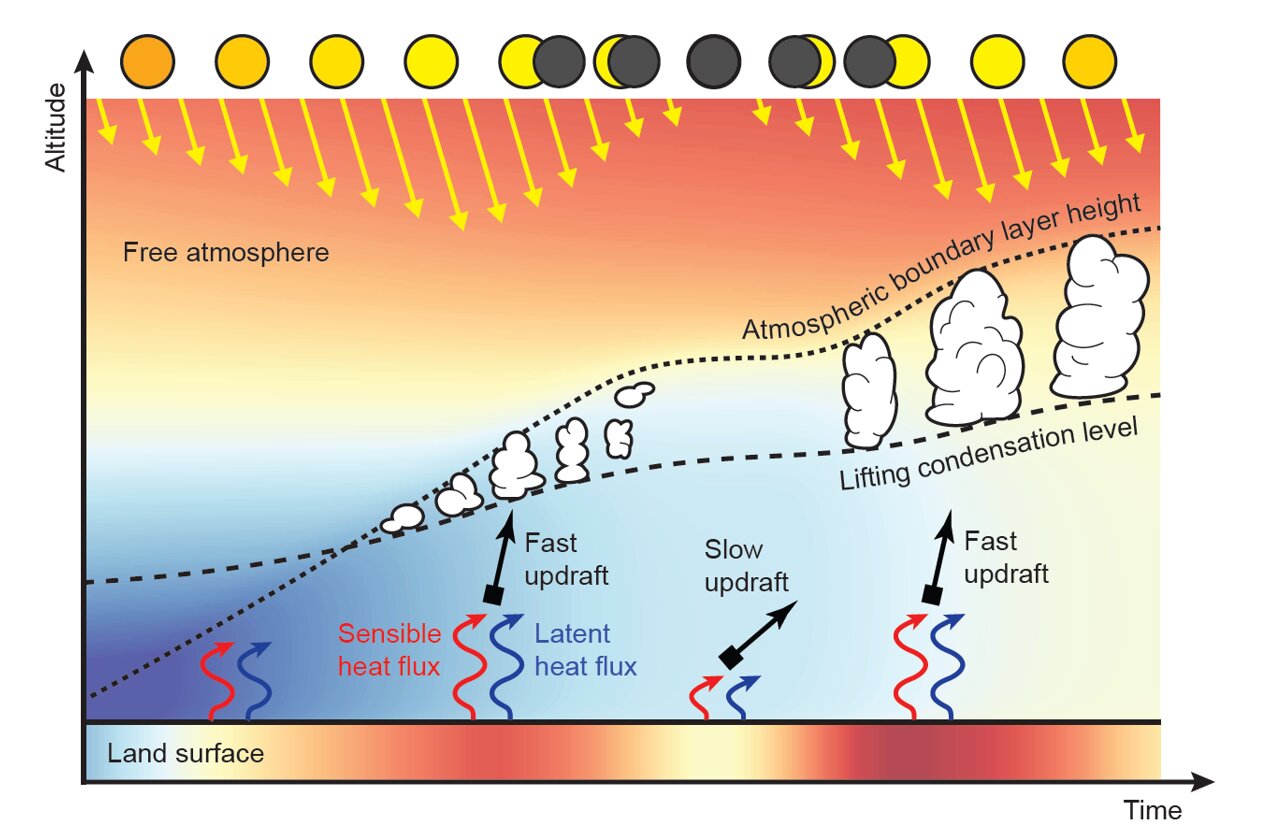During a solar eclipse, when the Moon passes in front of the Sun, the world is temporarily transformed into darkness. However, the effects of this celestial event extend beyond the mere darkness, impacting our planet in profound ways. One such effect is the sudden disappearance of clouds, a phenomenon that has puzzled scientists for years. A recent study led by Victor Trees of the Royal Netherlands Meteorological Institute and Delft University of Technology has shed light on why this happens.

Key Findings
The research team discovered that shallow cumulus clouds over land vanish rapidly, starting from the point when just 15 percent of the Sun is obscured by the Moon. This is not a universal phenomenon affecting all types of clouds, which is why we don't always experience clear skies during an eclipse. The study found that cumulus clouds, which are crucial in forming rain clouds, start disappearing in large numbers when the Sun's light is blocked and continue to do so until the eclipse ends.
The revelation that clouds vanish during a solar eclipse due to the interaction between celestial bodies and Earth's atmosphere adds a new dimension to our understanding of atmospheric processes. This study not only unravels a long-standing mystery but also underscores the intricate connections between natural phenomena and climate systems. As we continue to explore the mysteries of our universe, each discovery brings us closer to unraveling the complexities of our planet's dynamic environment.

The Science Behind the Disappearance
The team used cloud modeling software called DALES to simulate the conditions during a solar eclipse. Their simulations revealed that when sunlight is blocked, the Earth's surface cools, which in turn reduces the updrafts of warm air from the surface. These warm updrafts are essential for forming cumulus clouds, as they carry water vapor that condenses into droplets as it rises into cooler altitudes. When the ground cools and these updrafts cease, cumulus clouds can no longer be sustained. They only reappear when the Sun re-emerges and starts warming the ground again. This effect is observed only over land, as the ocean does not cool down quickly enough for this phenomenon to occur.
Implications for Climate Engineering
The findings have significant implications for future attempts at climate engineering, particularly those involving blocking some of the Sun's rays from reaching Earth's lower atmosphere. The study suggests that fewer clouds could partly counteract the intended effect of climate engineering, as clouds reflect sunlight and help cool down the Earth. This discovery underscores the importance of understanding the complex interactions between solar eclipses and our planet's atmosphere, as it could influence the outcomes of geoengineering efforts to mitigate climate change.
Conclusion
The study by Trees and his colleagues provides a deeper understanding of how solar eclipses affect our planet's weather patterns, specifically the disappearance of cumulus clouds. This knowledge is crucial for scientists and policymakers as they explore geoengineering solutions to combat climate change. The research highlights the need for further investigation into the potential detrimental effects of blocking sunlight on weather patterns, as the disappearance of clouds during an eclipse could have unintended consequences for our climate.
This study is a testament to the importance of scientific inquiry in understanding the complex interactions between our planet and the cosmos. As we continue to explore the mysteries of the universe and its impact on our world, we must also consider the potential consequences of our actions on the environment. The disappearance of clouds during a solar eclipse serves as a reminder of the intricate web of life on Earth and the importance of preserving it for future generations.